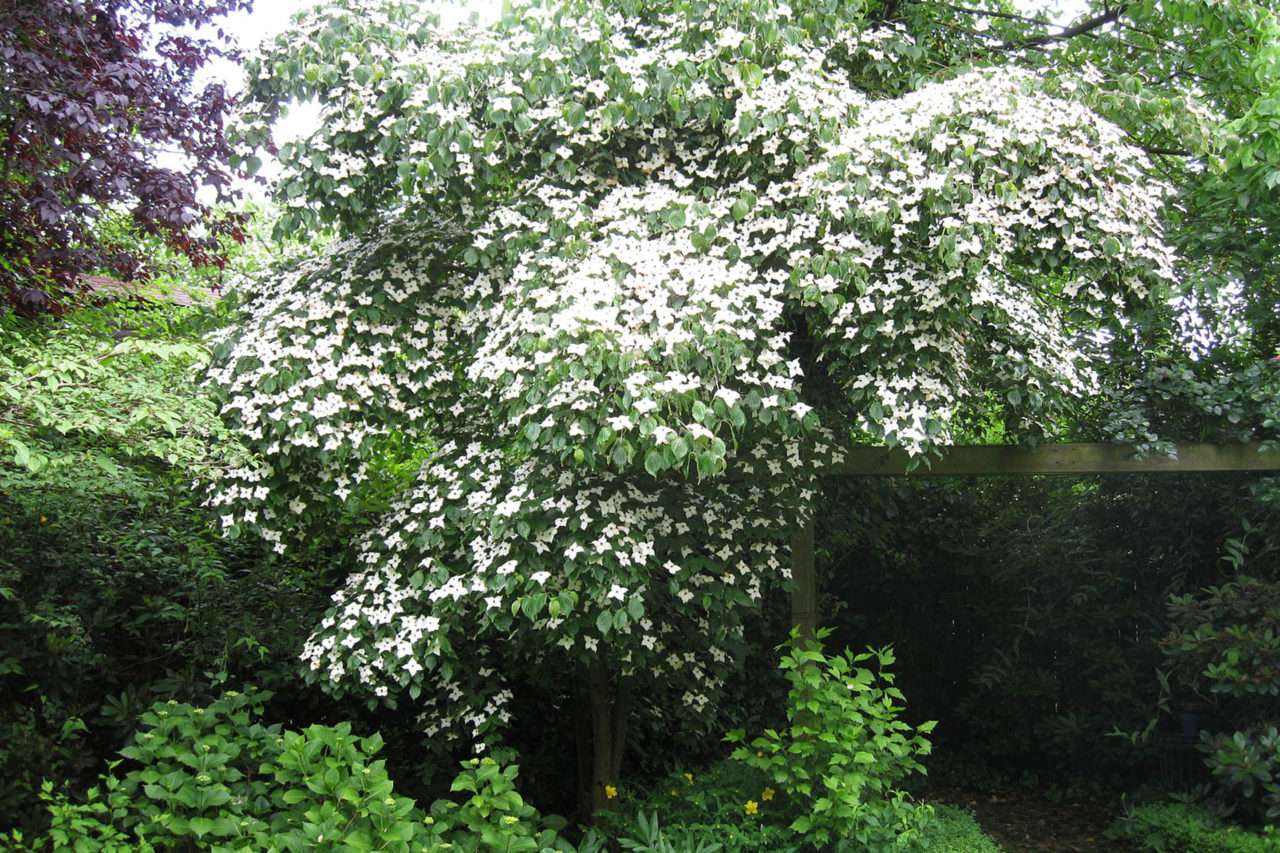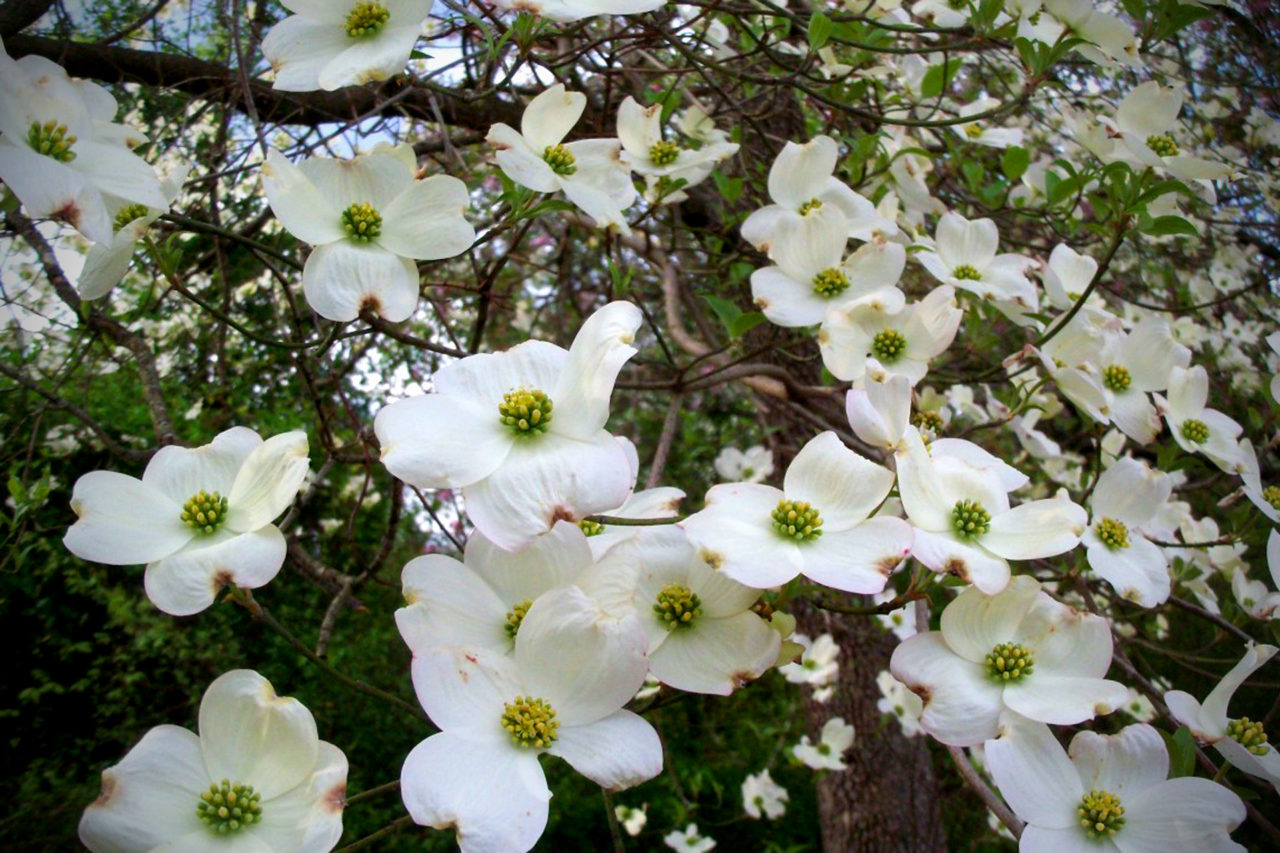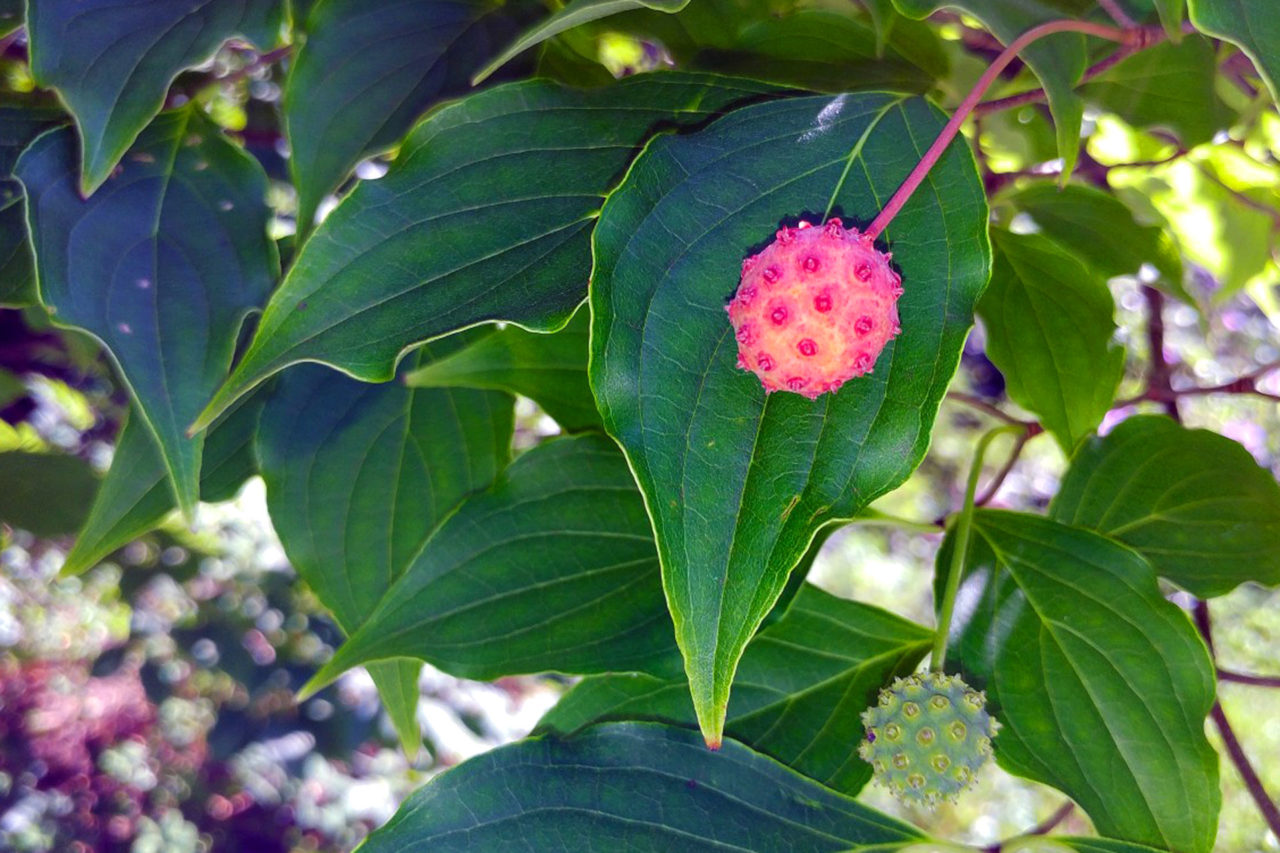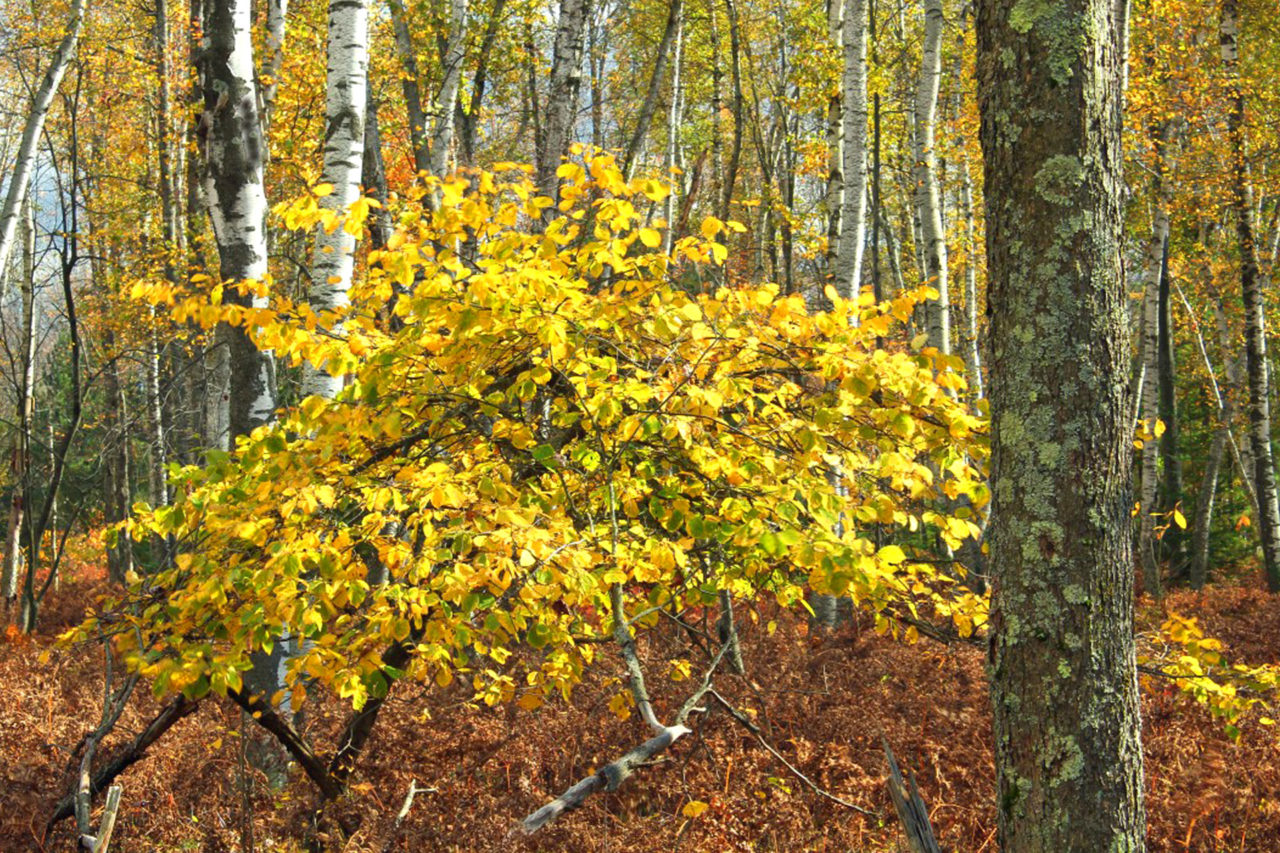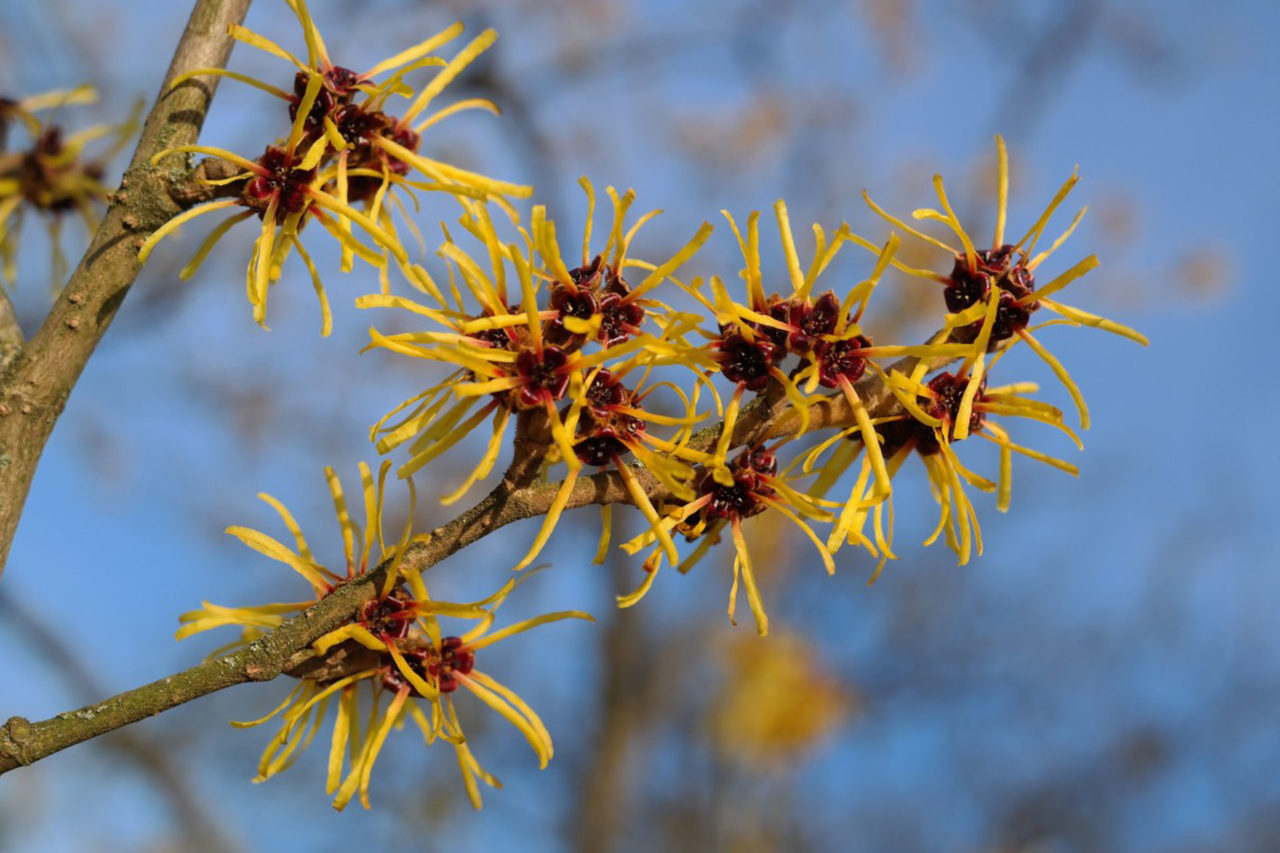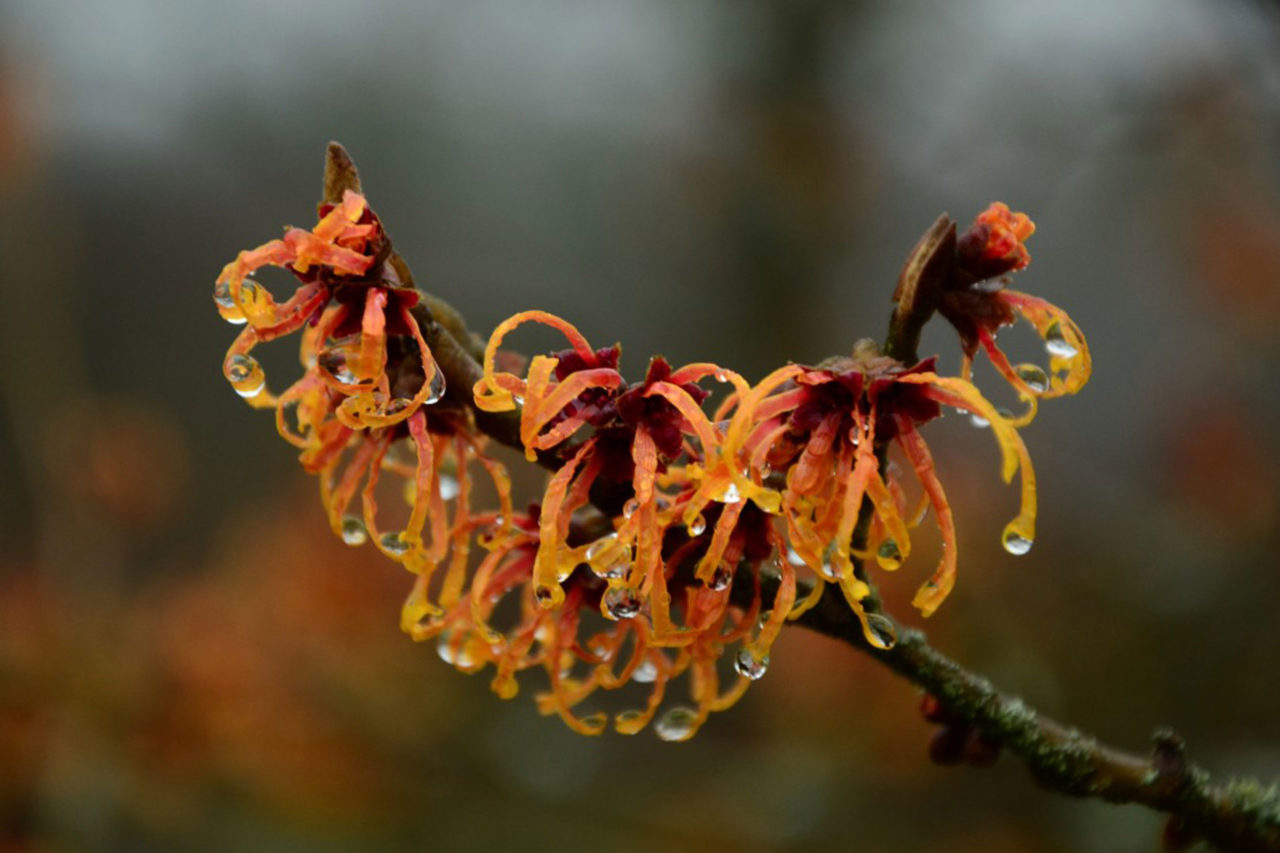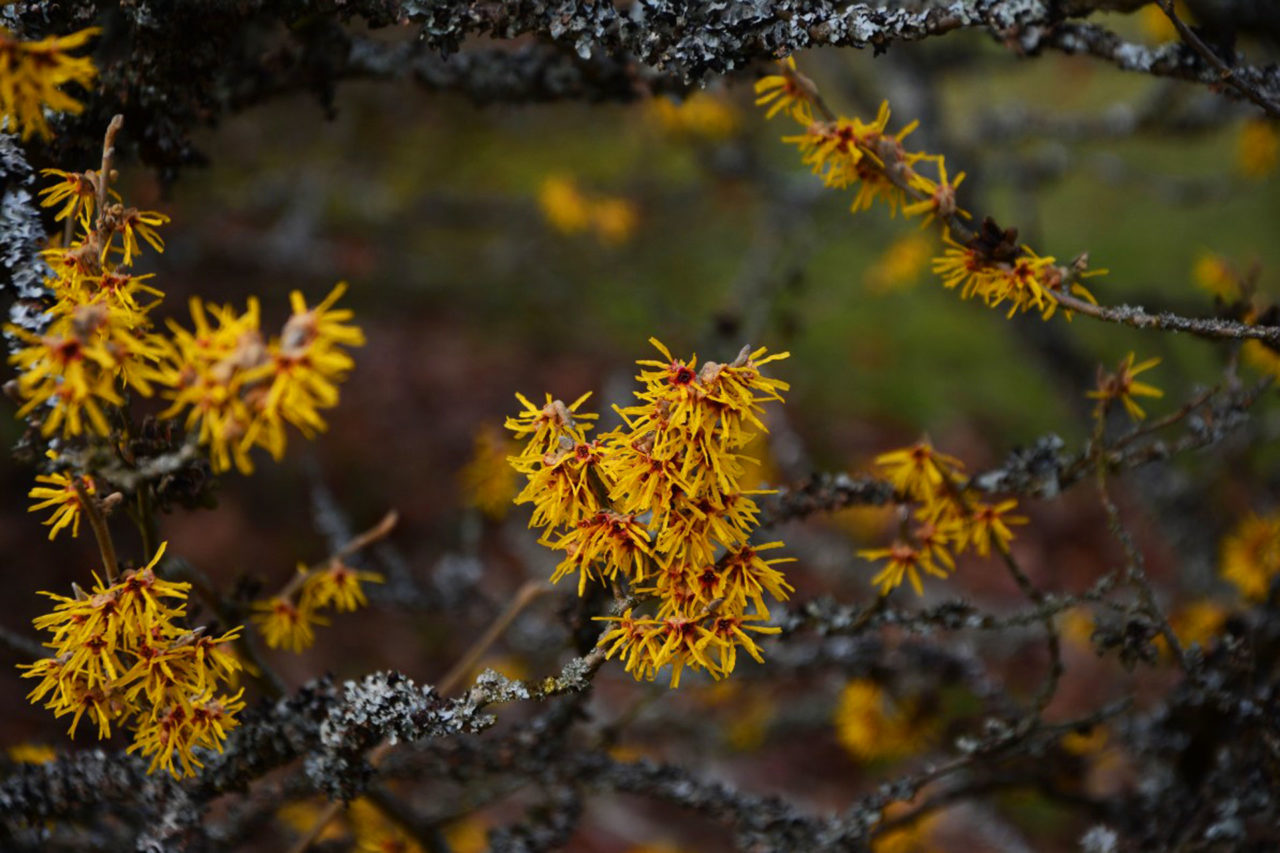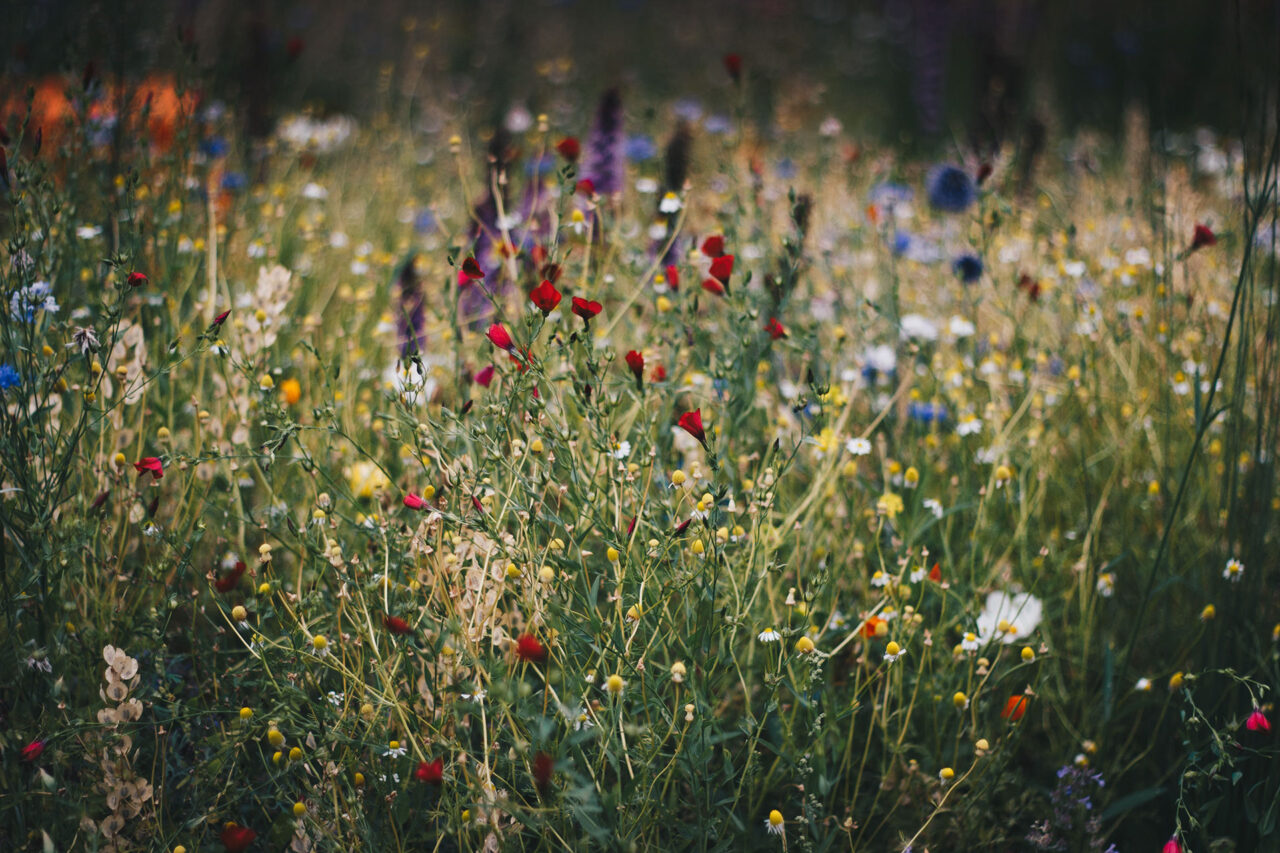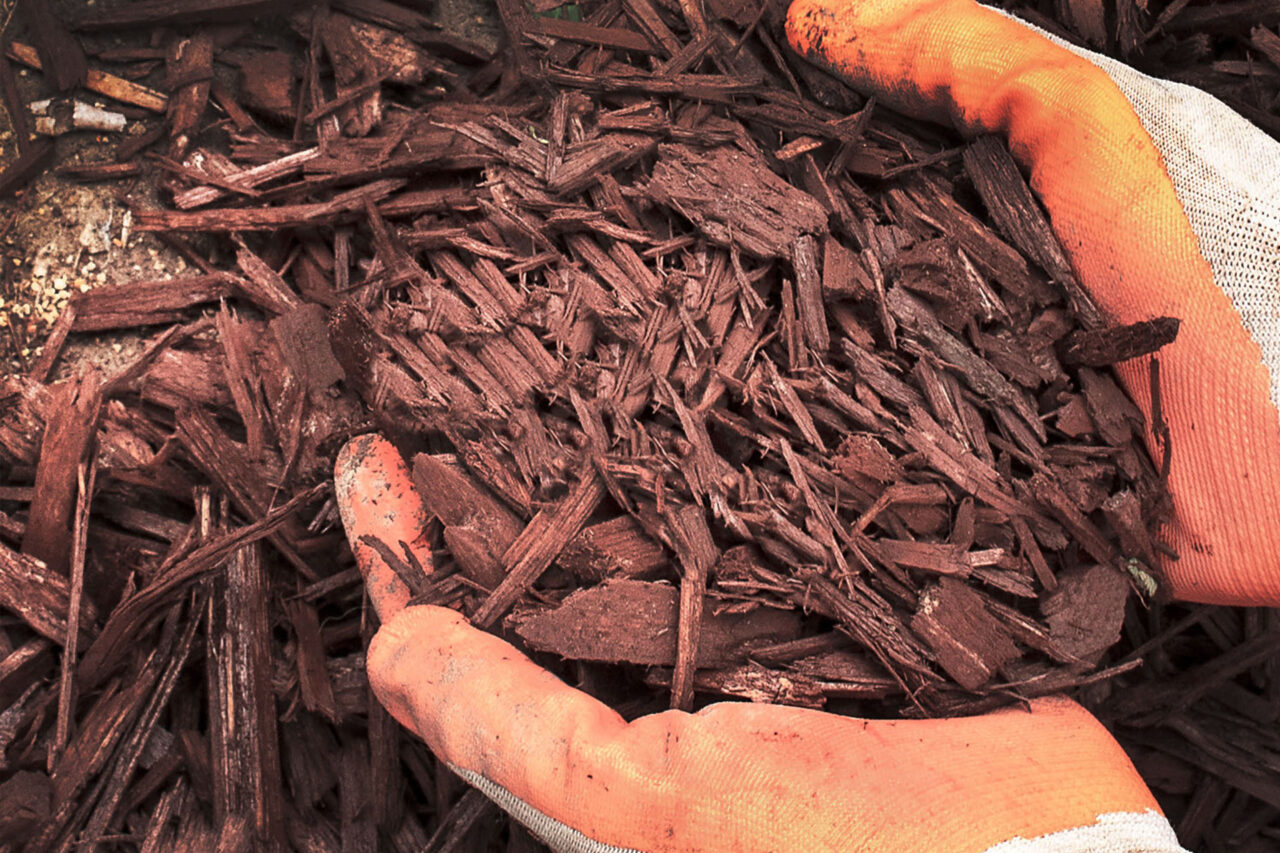Putting the Fun in Functional
When you get down to it, the landscape design process is really about creating solutions to solve the challenges Mother Nature throws our way – trees to provide screening and shade, flowering shrubs that won’t be eaten by deer, perennials that can survive hungry rabbits, and so on. That said, there’s always room to include a few personal favorites in your designs, plants that have caught your fancy over the years for one reason or another. For me, there are three ornamental trees that I almost always include in my designs, and here’s why:
Cornus Kousa Dogwood
I’m going to leave it general at the Kousa dogwood species, although there are certainly some cultivars that I like, ‘Venus’ for the extra-large white flowers, ‘Wolf Eyes’ for the smaller stature and variegated foliage, but I digress. The Kousa dogwood is a favorite of mine for several reasons, but the main one (and a recurring theme) is multi-season interest. Late spring is the most spectacular time for this tree, as the white flowers often cover the tree.
The flowers emerge in late May and early June, which is a time that has few other trees in bloom. The flowers are followed by colorful fruits that ripen throughout the summer to an almost raspberry-pink. The fall foliage color is a dependable reddish purple that, while not amazing, is reliably beautiful. When the leaves eventually fall, the striking mottled bark shines through. Apart from being a true four-season plant, the Kousa dogwood is also an upright but compact grower, meaning that you can almost always find a spot for it. It doesn’t suffer from dogwood anthracnose, like the native Cornus florida, and it will happily grow in full sun to a surprising amount of shade.
Hamamelis X Intermedia
Winter blooming witch hazel is a particular favorite of mine. It doesn’t have the brash, in your face beauty of the Kousa dogwood, instead featuring a subtle elegance that rewards people for getting out in the garden during the winter. I much prefer witch hazel over the ubiquitous yellow of forsythia. It blooms longer, it blooms earlier (in the middle of winter when nothing else is even thinking of flowering), and it looks better for the rest of the year. The foliage is large and substantial, if unspectacular, but can provide very good fall color.
Heptacodium Miconiodies
Another upright small tree that makes its mark with multi-season interest. Heptacodium has an abundance of small white flowers in September, at a time when most other woody plants have long stopped flowering. The flowers are followed by purplish-red fruits that persist through the fall. The winter allows the exfoliating bark to take center stage. Heptacodium is such a unique tree that it’s hard to plant it as anything other than a specimen. As long as it has enough sun it will grow happily, as it tolerates most soil conditions and has few pest or disease issues. It is certainly not as prevalent (or available) as the Kousa dogwood or witch hazel, but Heptacodium rarely disappoints and should be planted more.
